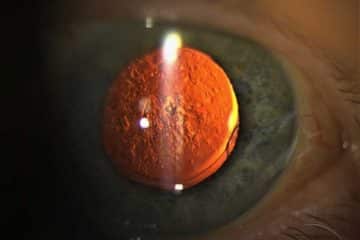Oculoplastic Surgery – Overview
Oculoplastic surgery, also known as oculoplastics refers to a variety of surgical procedures that deal with the eye socket, eyelids, tear ducts and the face. Oculoplastics also involve the reconstruction of the eye and associated structures.
The procedure is performed by ophthalmologists who have undergone specialized training in the areas of oculoplastics.

Types of Oculoplastic Surgery
There are a number of oculoplastics designed to address a variety of medical conditions and cosmetic concerns. Some of the most common procedures include:
A. Eyelid surgery
i. Blepharoplasty – This is a type of surgery that repairs droopy eyelids and may involve removing excess skin, muscle and fat. More: Blepharospasm
ii. Ptosis – Oculoplastic surgery carried out to treat drooping or falling of the upper eyelid (droopy eyelid).
iii. Ectropion – Ectropion is a condition in which the lower eyelid is “rolled out” away from the eye, or is sagging away from the eye. The sagging lower eyelid leaves the eye exposed and dry. If ectropion is not treated, the condition can lead to chronic tearing, eye irritation, redness, pain, a gritty feeling, crusting of the eyelid, mucous discharge, and breakdown of the cornea due to exposure.
iv. Entropion repair – Entropion is a condition in which the eyelid is rolled inward toward the eye. It can occur as a result of advancing age and weakening of certain eyelid muscles. A turned-in eyelid rubs against the eye, making it red, irritated, painful, and sensitive to light and wind. If it is not treated, the condition can lead to excessive tearing, mucous discharge and scratching or scarring of the cornea. A chronically turned-in eyelid can result in acute sensitivity to light and may lead to eye infections, corneal abrasions, or corneal ulcers.
More: Eye Muscle Surgery
B. Surgery Involving the Tear Duct
Tears normally drain from the eye through small tubes called tear ducts, which stretch from the eye into the nose. If a tear duct becomes blocked or fails to open, tears cannot drain from the eye properly. The duct may fill with fluid and become swollen, inflamed, and sometimes infected. There are a number of oculoplastic procedures to treat issues related to the lacrimal apparatus (tear ducts).
They include Canalicular laceration repair, nasolacrimal duct repair, etc.
C. Eye removal
These involve oculoplastics that deal with removal of all or part of the eye and its associated structures. Eye removal surgery depending on the eye structure removed includes enulceation, evisceration and exenteration.
D. Other
Other oculoplastics are botox injections, injectatble filler and browplasty.
Oculoplastic Surgery Risks and Complications
Like every type of surgery, occuloplastics carries their own risks of complications.
Complications that can occur include bleeding, infection, dry eyes, abnormal discoloration of the eyelids, abnormal folding in or out of the eyelid skin, an inability to fully close the eyes, a pulled-down, lower-lid lash line, or a possible loss of vision.
Oculoplastic Surgery Recovery Time
Recovery times vary by procedure and depend greatly on following post-operative instructions. The average recovery time for most procedures is about 2 weeks. In most cases, people who have oculoplastic surgery are cleared to return to daily activities within 5 to 7 days after surgery.
Oculoplastic Surgery Cost
Occuloplastics cost varies according the surgeons experience, the type of procedure used and the geographic office location. The average cost of oculoplastic surgery is $3,282, according to 2019 statistics from the American Society of Plastic Surgeons. This average cost is only part of the total price – it does not include anesthesia, operating room facilities or other related expenses.
More: Cornea Ulcer Treatment


